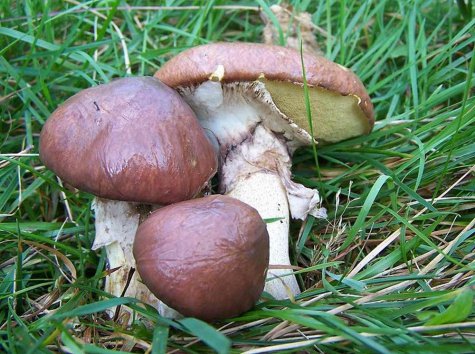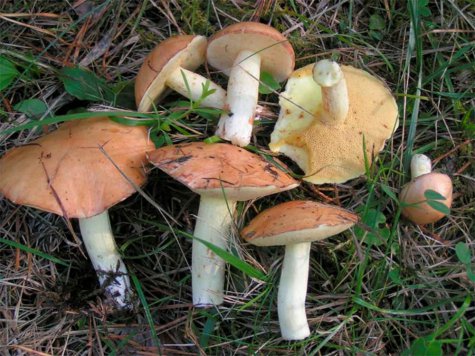Summer mushrooms – Suillus species
Photos Wikipedia
Translation Liis
Suillus luteus, slimy jack
Slimy jack Võitatik Suillus luteus
Dotted stalk suillus Lambatatik Suillus granulatus
There was nothing wrong with the mushroom spring in May; there were morels (Morchellas and Gyromitras), and early morels (Ptychoverpa bohemica). Now there are chanterelles but sparingly, only a few Suillus, the russulas have maggots (effects of the warm winter?). Cepes are only found occasionally. We will keep an eye on the development of the mushroom summer..
Suillus luteus, the slippery jack and Suillus granulatus, dotted stalk suillus are very similar summer mushrooms growing together and often mixed up with one another. So there is reason to introduce these species together because moreover people are used to calling both ”slippery jacks”.
Suillus luteus, the proper slippery jack is ”conditionally edible”, meaning that it may, but need not, cause stomach or intestine irritations, and also allergies. NB! Young mushrooms are eaten fresh, i e without parboiling, but the tough and slimy cap skin is removed. Mycologists have not reached a consensus in these matters..
The Suillus granulatus, dotted stalk suillus, is a good eating mushroom and also used fresh. The both commonly occurring species can be found at the verges of pine forests, grassy young pine forests, heaths, often growing together.
How to recognize them and tell the difference?
The thickly slimy cap of the S. luteus is convex and fleshy, from greyish brown to dark brown in colour and quite often with a violet or reddish tinge. Sic! The tubes under the cap are covered by a hymenium that shows clearly in the photo and that the dotted stalk suillus lacks.
The less slimy cap of the S. granulatus, the dotted stalk suillus, is domed in young mushrooms but flattens on ageing; the colour is yellowish brown. A oung mushroom has pale yellow tubes under the cap, darkening with age.
Both species are quickly infested by maggots.
Suillus granulatus, the dotted stalk suillus
.










